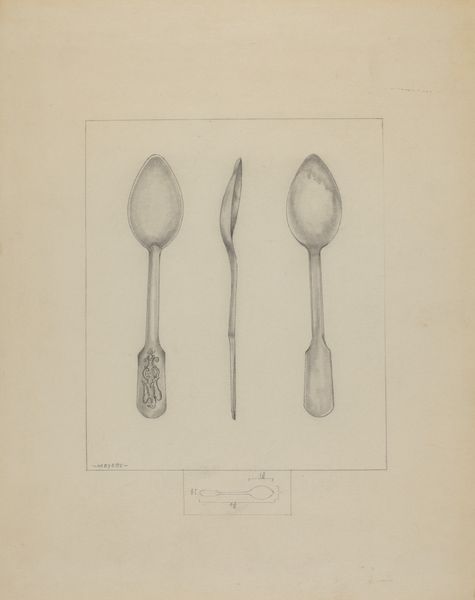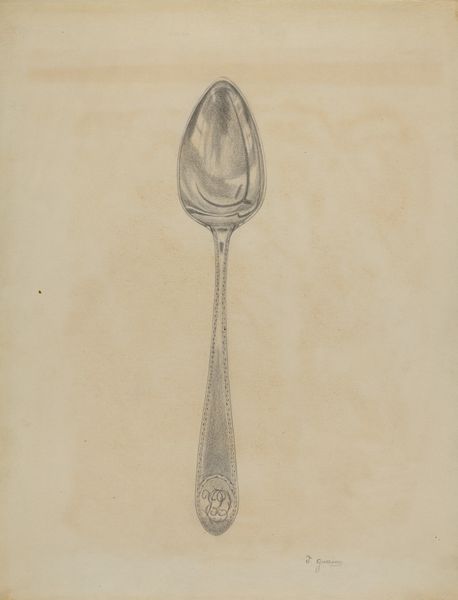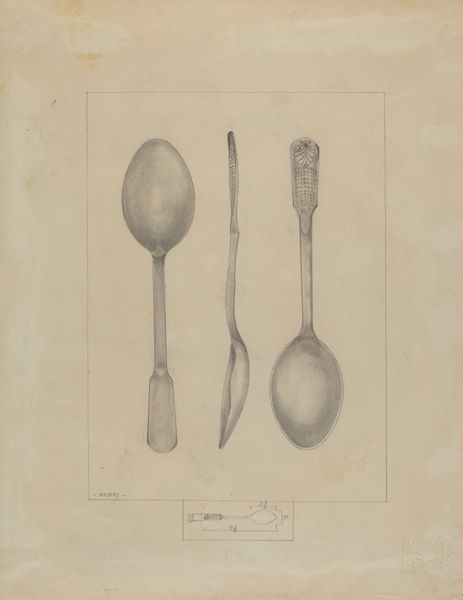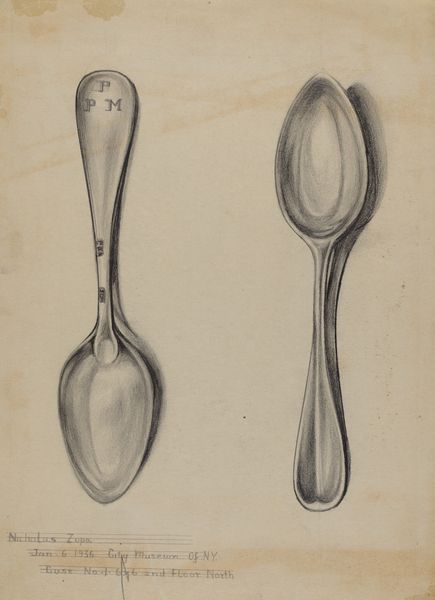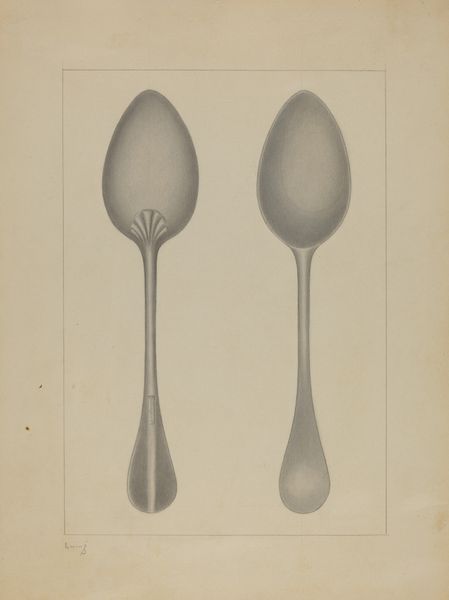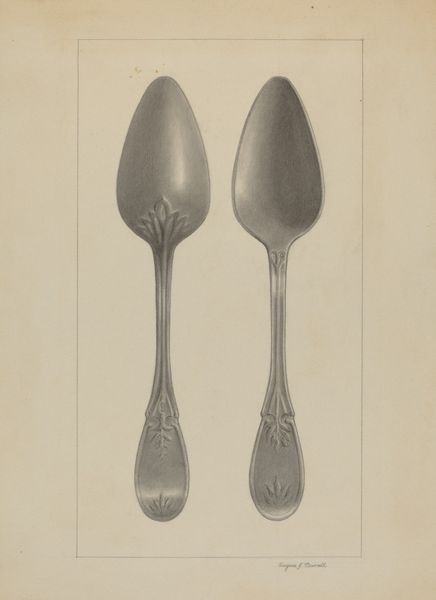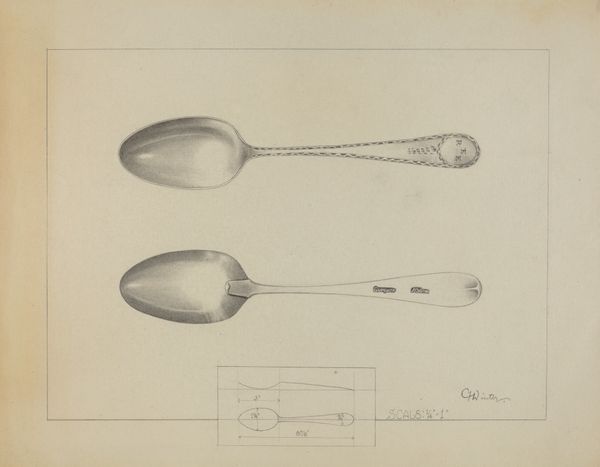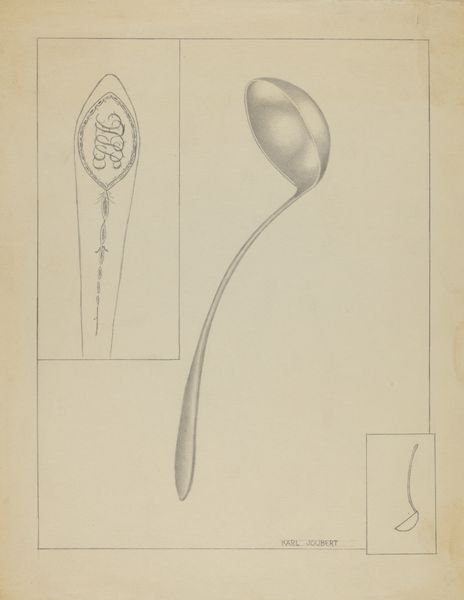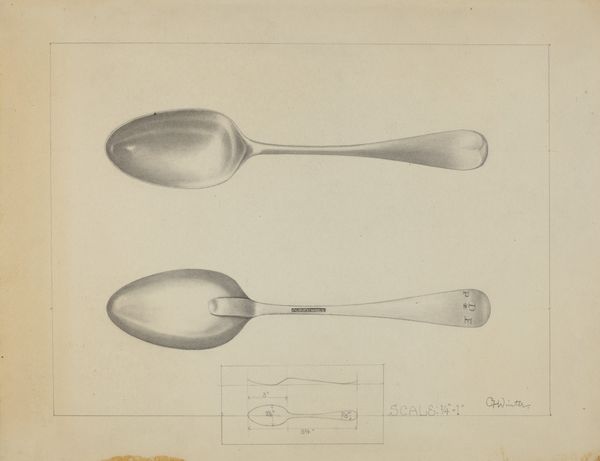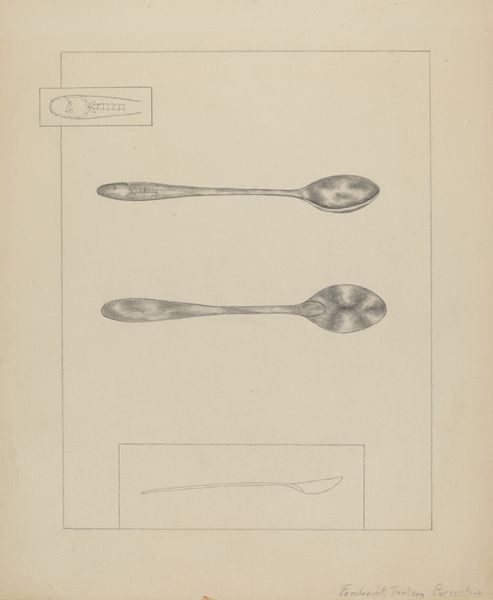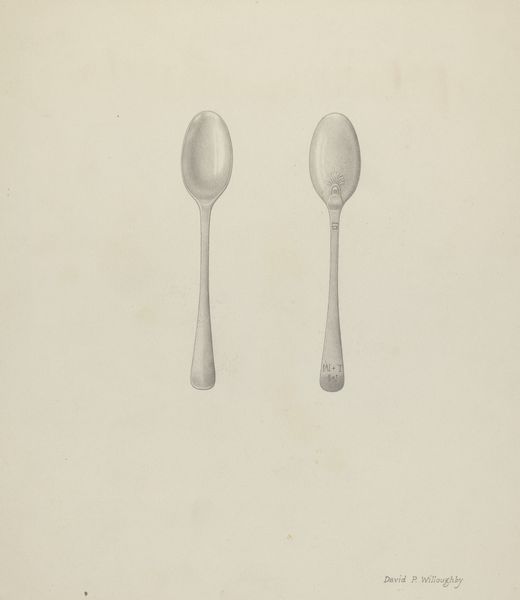
drawing, pencil
#
drawing
#
pencil drawing
#
pencil
#
realism
Dimensions: overall: 27.9 x 22.9 cm (11 x 9 in.)
Copyright: National Gallery of Art: CC0 1.0
Curator: This is Grace Halpin's "Pewter Spoon," created around 1937, rendered meticulously in pencil. Editor: Immediately, I'm struck by its almost ghostly quality. It's a simple, everyday object, yet Halpin elevates it through careful shading and detail. The light seems to bounce off the metal even though it’s just a drawing. Curator: Halpin's work often reflects a close observation of domestic life. Consider how the simple act of sketching this spoon intersects with gendered labor, given the historical associations of women and the domestic sphere. Was she critiquing or celebrating such roles, or simply observing? Editor: It’s intriguing that she included two detail studies alongside the full spoon rendering. The close-ups suggest she’s interested in design or craft traditions. We see etched ornamentation with initials, almost like a personal mark or family crest. It hints at the spoon’s history. Curator: Absolutely. Think about the era this was made – the late 1930s. Mass production was reshaping domestic objects. The attention to detail here could be read as a commentary on valuing handcrafted objects versus industrial ones. Halpin seems to pause, urging us to examine a very commonplace object. Editor: I find the realism captivating. Despite its utilitarian purpose, the spoon becomes an object of beauty, almost an artifact. Was Halpin making a subtle statement about value, imbuing worth to something society may undervalue? Curator: Precisely. Perhaps her interest lay in democratizing the art object itself – locating beauty and meaning in everyday settings, much like artists engaging with ready-made items. She presents the viewer with an intersection between social status, the intimacy of the dinner table and what defines artistic study. Editor: It’s amazing how a seemingly simple sketch can hold so many layers. It causes one to ponder on value, craft and domesticity. Curator: Indeed. It’s a testament to how artists, even with modest subjects, can prompt us to see our world anew, making something as humble as a spoon profound.
Comments
No comments
Be the first to comment and join the conversation on the ultimate creative platform.
